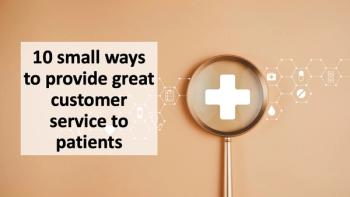
Why providers need to consider generational differences in the payment process
Generation Z is driving changes to patient engagement and payment.
As approaches to healthcare delivery continue to evolve, so do patient expectations for engagement from their providers and preferences for how to pay for medical care.
Driving many of these changes is the rise of Generation Z, or those born between 1997 and 2012, who account for 20% of the US and 25% of the global population, but only about 3.3% of healthcare spending, according to the
For example, 66% of Generation Z uses digital tools such as wellness apps and fitness trackers to monitor their health, compared with just 40% of other generations. Members of Generation Z are also two times more likely than other generations to share their health information with providers different than their primary care doctor, such as a health insurance company, retail clinic, or third-party app.
These findings echo a
Perhaps surprisingly, at 8.4%, Baby Boomers and seniors were most likely to engage in digital healthcare activities only, compared with 7.3% of Generation X, 5.4% of bridge millennials, 4.8% of millennials, and 3.4% of Generation Z.
What it means for providers
Today’s healthcare model is transitioning away from one that is focused on treating specific medical conditions when they arise to an approach that prioritizes wellness, prevention, outcomes, and overall health.
To keep pace with these changes, it is critical that providers adopt the
By accounting for generational differences in payment preferences, providers can realize the following benefits:
Greater loyalty: Card-on-file transactions refer to payments in which cardholder information is securely stored on-file to be used for future purchases. The card-on-file option appeals to some patients due to its convenience of relieving them from needing to enter their 16-digit credit card number, expiration date, and security code for future transactions. Additionally, having a card on file creates a feeling of familiarity as a repeat patient or customer, similar to having a card saved with an e-commerce site.
Providers should strive to offer “omnichannel” service to patients, which refers to the delivery of a seamless customer experience across all interactions, whether in-person, on websites, or apps, for example. Providers can drive greater
Faster payments: Modern and convenient payment options accelerate the check-out process for patients and providers. For example, providers can speed up payments by accepting a wide range of payment types, including modern options such as digital wallets like Google Pay and Apple Pay.Understanding how your patients prefer to engage and pay can make the experience more frictionless and convenient, from pre-arrival to post visit. Digital wallets allow for less friction during the payment process by using a card stored on a phone or other device with biometric authentication, skipping the need to key in a 16-digit number and expiration to complete a payment.
Increased staff efficiency: With easier, no-hassle payment options, staff members spend less time focused on billing and collections. For example, having the patient pay before they show up or using a self-service method after their visit reduces time during check-in accepting payments and phone calls. The faster, more convenient process associated with contactless payments enhances staff efficiency, enabling employees to devote more time to patient care.
Today’s patients increasingly expect providers to offer them the type of digital engagement tools that bring greater convenience and flexibility. With the right combination of human support and technology, providers can deliver a predictable, dependable patient experience.
Ryne Natzke is Chief Revenue Officer of TrustCommerce, a Sphere company
Newsletter
Optimize your practice with the Physicians Practice newsletter, offering management pearls, leadership tips, and business strategies tailored for practice administrators and physicians of any specialty.








